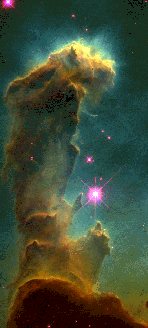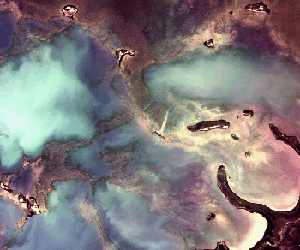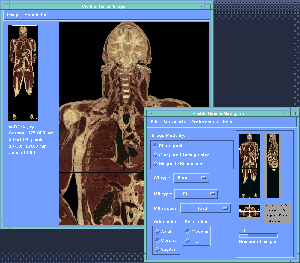 |
Founded in 1977, Research Systems is dedicated to creating the best analysis, visualization and application development tools to help scientists and engineers minimize programming and gain deeper insight into their data. The company has grown steadily to more than 100 employees, with an emphasis on building a team whose expertise complements the work of its more than 40,000 customers worldwide. The original development group is intact and the founder, David Stern, maintains a significant role in producing and refining product code and direction. By hiring seasoned professionals for key management positions, Stern has enabled Research Systems to sustain strong revenue growth, maintain profitability and expand worldwide operations. Research Systems has partners throughout the world. Distributors in South America, Asia, Europe and the Pacific Rim provide an active link between Research Systems and customers outside the United States.
Research Systems is committed to technical innovation, discovery and education. Academic and research institutions benefit from Research Systems' devotion to scientific advancement. The Smithsonian Air & Space Museum, astronomers in the former Soviet Republics, the University of Colorado and the Sequoia 2000 project to explore global change are just a few of the organizations that have expanded the base of scientific knowledge with the help of Research Systems. Thousands of commercial organizations are also using our products to quickly bring useful, innovative products to market.
 IDL 5.0, the Interactive Data Language, is the
ideal software for data
analysis, visualization, and cross-platform development. IDL software
combines all the tools you need for any type of project: from
"quick-look", interactive analysis and display to large-scale commercial
programming projects. All in an easy-to-use, fully extensible
environment.
IDL 5.0, the Interactive Data Language, is the
ideal software for data
analysis, visualization, and cross-platform development. IDL software
combines all the tools you need for any type of project: from
"quick-look", interactive analysis and display to large-scale commercial
programming projects. All in an easy-to-use, fully extensible
environment.
 |

ENVI 2.6
ENVI is an image processing package that allows scientists to quickly and efficiently import, process, and analyze any remote sensing data including panchromatic, multispectral, and hyperspectral imagery. Spectral libraries and spectrometer measurements are also easily processed. Sub-pixel analysis allows deeper analysis and discovery on your data. Improve identification with ENVI's integrated radar tools by selecting polarizations, analyzing scattering patterns and extracting textural information.
ENVI is the most interactive, powerful, and easy-to-use image processing
package available. Unlike other commercially-available systems, ENVI
includes sophisticated customization features and an adaptable window
interface that allows users to design custom tools to tackle complex
image processing problems. Features like array-based image math, user
extensibility, advanced 3-D visualization tools, and versatile
annotation take advantage of IDL, Research Systems' flagship scientific
visualization and data analysis software, to give scientists the most
powerful image processing system available.

Version 1.1
Gain new perspectives into the structure and function of the human body with the world''s first complete, digital photographic reference for exploring human anatomy. Research Systems' Visible Human CD Collection includes more than 20,000 image slices through a human male and female body in axial, sagittal, and coronal views. Vivid, digital color photos, along with magnetic resonance data and computed tomography images, let you investigate and display anatomical structures in ways never before available. The latest version of the Visible Human Male includes annotaton of the anatomical elements.
Compressed onto two CD-ROMs, these insightful images can be animated, annotated, and highlighted for interactive analysis and display. They are the most complete, convenient anatomical references on the market today. A graphical user interface, called the Navigator, makes it easy for anyone to explore the Visible Human. Diverse examination options give you insight into organs, bones, muscles, and systems of the body. Over 20 GB of data are compressed onto two CD-ROMs. It's as simple as locating the region of interest and clicking the mouse.
This product is the result of the National Library of Medicine's Visible Human Project. The Visible Human Project is a research effort funded by the NLM and implemented by the University of Colorado. It was originally undertaken to create complete, three-dimensional sets of anatomically-detailed images of a human male and female. Research Systems developed the graphical Navigator and compressed the data onto CD-ROMs to give physicians, educators, and researchers access to thousands of images in a convenient, easy-to-use format.